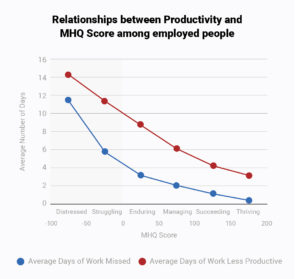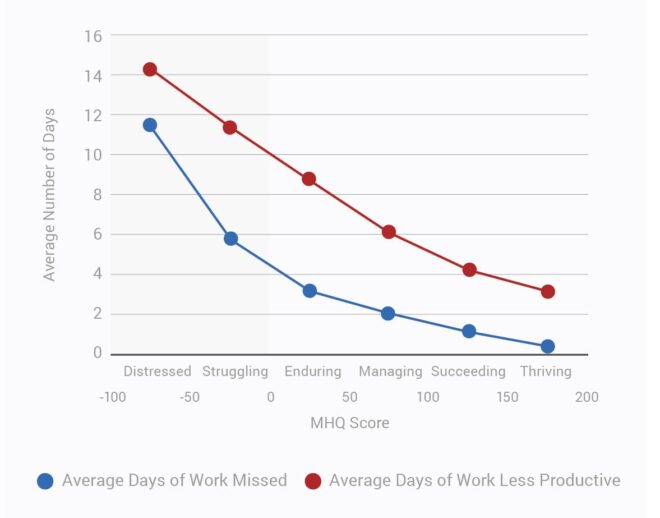As we start the new year, many of us are making resolutions around losing weight, getting stronger, and eating healthier in 2022. But if there’s one thing that the pandemic has taught us, it’s that we also must pay attention to and support our own mental health. This not only goes for us as individuals, but for our organizations as well.
A recent report out from Sapien Labs showed that workers with poor mental wellbeing had 14.3 days of low productivity each month. The bottom line? Poor mental health is having a direct impact on the bottom line, and creating a mentally healthy, resilient workforce is more important than ever.

There are key steps leaders can take to make real, positive change in the mental wellbeing of their workforce.
- Improving employee mental wellbeing starts at the top.
Leadership teams must show that they value employee mental wellbeing by making it a strategic priority and putting real funding behind it. Making employee mental health a priority can have cascading positive impacts, such as encouraging uptake of existing benefits, improving recruitment and retention, etc. - Use comprehensive, scientifically-based assessment tools to measure the mental wellbeing of your workforce.
You can’t manage what you don’t measure. If organizations want to tackle employee mental health in a meaningful way, they first have to have to understand the challenge.The WorkforceMHQ is an anonymous, 15-minute assessment tool that measures employee mental wellbeing and enables organizations to make data-driven decisions to improve workplace mental health. Measuring can help drive to insights like:
– Possibly unique/unseen challenges being experienced by different groups in the organization
– How traumas and adversities at home may be impacting employees
– The effects of isolation or other lifestyle factors
– Impact of return-to-work issues
– And more - Move beyond band-aid fixes.
Once you have a data-driven understanding of the mental wellbeing of your workforce, you can make meaningful changes to improve it. In a recent article from CNBC, Sapien Labs Founder and Chief Scientist Dr. Tara Thiagarajan explains that “if organizations really want to move the needle in improving employee well-being, the systems and policies of work itself will have to change.” In addition to programs that might encourage more exercise and better sleep, we also have to use the data to look at how we work and supports that can be put in place to improve employee mental health. - Now, reassess.
After implementing programs based on your initial assessment, it’s important to measure again to ensure that these programs are effective and worthy of investment. We also know that mental wellbeing is not a static thing, particularly as we face changes and new challenges as result of the global pandemic.
Tackling employee mental health is a daunting challenge, but there are real strategies you can implement to improve it. Measurement is an important first step.


















